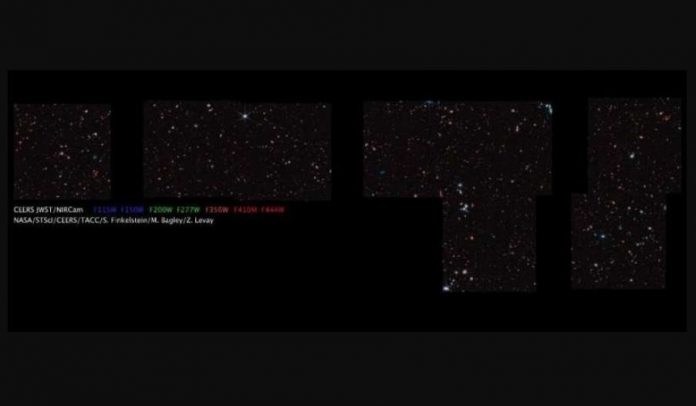Webb surpassed himself with a record mosaic of 690 images
- August 19, 2022
- 0
A team of scientists using the James Webb Space Telescope has released the largest image ever taken by the telescope. The image is a mosaic of 690 individual
A team of scientists using the James Webb Space Telescope has released the largest image ever taken by the telescope. The image is a mosaic of 690 individual

A team of scientists using the James Webb Space Telescope has released the largest image ever taken by the telescope.
The image is a mosaic of 690 individual frames taken with the telescope’s near-infrared camera (NIRCam) and covers an area of sky approximately eight times larger than JWST’s first deep-field image, released July 12.
And certainly full of early galaxies, many of which have never been seen before. Additionally, the team may have imaged one of the most distant galaxies ever observed.
Scientists from the Cosmic Evolution Early Release Science Research (CEERS) collaboration said the mosaic is a patch of sky near the ‘tail’ of Big Dipper. The images were taken as part of the initial observations by the CEERS team, who are working to show that the JWST can be used efficiently for extragalactic studies even while the telescope is making other observations.
“This is just Period 1 of our observations,” team member and astrophysicist Rebecca Larson said on Twitter. “We’re less than halfway through our full survey, and our data has already led to new discoveries and an unexpected but unpleasant plethora of never-before-seen galaxies.”
In the large mosaic there are several prominent galaxies shown in the image above. The first is a spiral galaxy with a redshift of z=0.16. The resolution of JWST images reveals numerous blue star-forming groups and star clusters.
There is also a system of galaxies interacting at a redshift of 1.4, dubbed “Space Kraken” by the CEERS team, as well as two interacting spiral galaxies at a redshift of z=0.7. The observations also point to the possibility of being the first supernova discovered with JWST images.
Other inserts show an impressive spiral galaxy, and the team says JWST highlights the accidental alignment of a galaxy with a tidal tail and a red group of galaxies, as well as JWST’s ability to resolve small-scale features for slightly distant galaxies.
Source: El Nacional
Alice Smith is a seasoned journalist and writer for Div Bracket. She has a keen sense of what’s important and is always on top of the latest trends. Alice provides in-depth coverage of the most talked-about news stories, delivering insightful and thought-provoking articles that keep her readers informed and engaged.